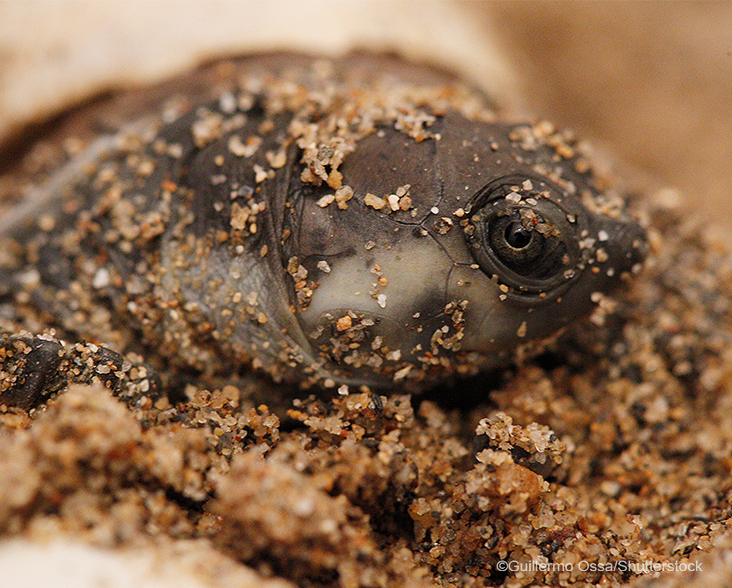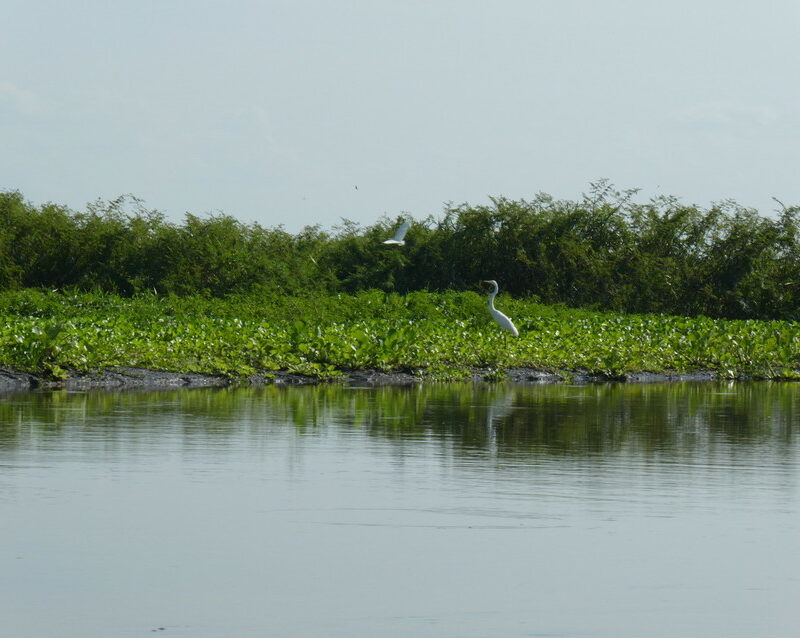Magdalena River Turtle
Species Data
Class: Reptilia
Order: Testudines
Family: Podocnemidiae
Scientific Name: Podocnemis lewyana
IUCN Red List status: Critically Endangered
IUCN Species Distribution Map
Description
The Magdalena River Turtle is a medium to large-sized turtle, with adult males reaching 320 mm in straight upper shell or carapace length and females up to 460 mm.
Adults have an oval and flattened carapace, comprised of eight costal scutes (plates made of keratin), five vertebral scutes, and 24 marginal, and lack a nuchal indentation. The carapace is wider in the posterior third and slightly raised on the edges, and the colour varies from grey to olive-brown with occasional dark spots. The plastron is yellowish-green with dark spots on its anterior and middle sections. The head is elongated with a groove between the eye sockets, and the beak is dark yellow to bone coloured and the throat yellow. The neck and legs are grey to olive.
This species is sexually dimorphic, with the head scales of males being greyish-brown and reddish-brown in females. Males also have a longer and thicker tail and a depression in the middle of the plastron, whereas females have a depression in the posterior carapace. In juveniles, the head is olive-grey with a light cream or yellow band between the posterior edges of the eyes and the eardrum.
Males reach sexual maturity in 3-4 years while females take 5-6 years.
Behaviour
Magdalena River Turtles spend much of their time basking on river banks or fallen logs along the shoreline, singly or in groups. They are mainly herbivorous but will also eat some animal matter such as insects and snails with the vegetation they eat, and juveniles will even take small fish.
Breeding occurs twice a year during two low water periods, the main dry season from December to May (with nesting peaking in March) and a secondary dry season from June to September. Adult females excavate a nest 20 cm deep in sand or gravel beaches or on exposed river banks, into which they lay an average clutch of 22 round to ellipsoid, slightly flexible, pale rosy-grey eggs that turn white within a few days and hatch after around 59 days.
Hatchlings measure 42-46 mm in straight carapace length and weigh 16-22 grams. The sex of the hatchlings is determined by the temperature at which the eggs are incubated, with more males than females produced if the average nest temperature is below 33.4 C, and more females if above.


Habitat
This species is endemic to Colombia, occurring north-west of the Andes in the Sin and Magdalena river basins, including the lower Cauca, San Jorge, and Nech tributaries as well as connected lagoons and flooded areas. It has also been introduced into the Tarra River in Venezuela.
Threats and Conservation
The Magdalena River Turtle has recently been categorised as Critically Endangered on the IUCN Red List due to an 80% decline in the population over three generations (30-45 years). Some populations in the upper San Jorge River have already been wiped out, and projections predict this species will be extinct in the Magdalena River in less than three generations (25 years).
Populations are under pressure from consumption by local people as a source of protein and for medicinal purposes, with adults captured using nets and hooks or by diving, and nesting females are hunted using dogs. Commercial exploitation is another threat, with hatchlings caught for the illegal pet trade and adults caught and sold for food in cities along the Caribbean coast. Flooding of nesting beaches caused by hydroelectric dams and drainage of wetlands for agricultural or ranching are also serious threats. The Magdalena River Turtle is listed in Appendix II of CITES, and commercial exploitation is prohibited by national legislation, including the collection of eggs and hatchlings, but is rarely enforced.
This species occurs in low densities and studies show that for the population to recover, the survival of adults is especially important. There are currently no protected areas within this species range, therefore the creation of a reserve is a top priority, along with education campaigns in fishing communities, protection of nesting females on beaches, and enforcement of legislation.
